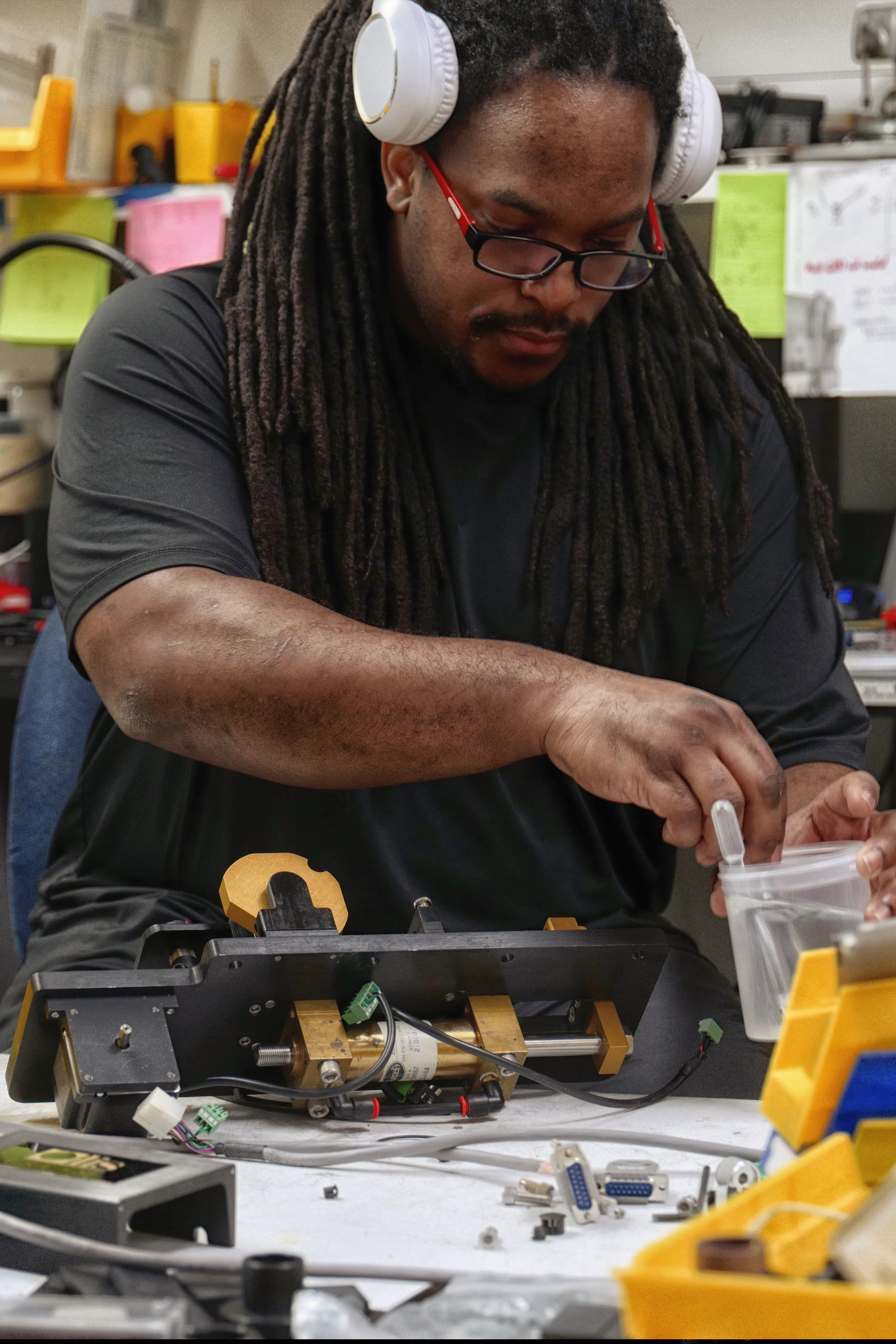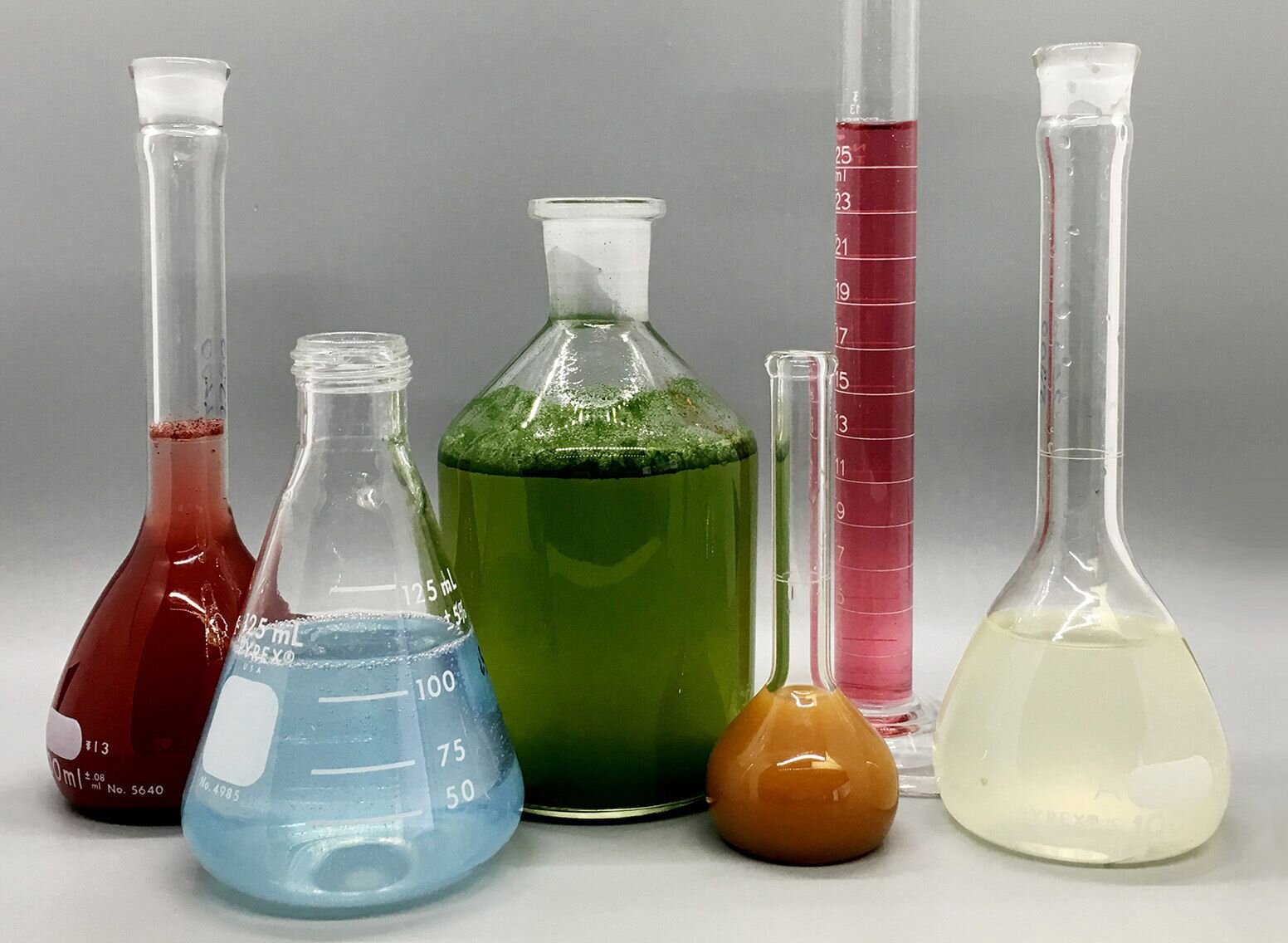Fascination About Uv/vis
Fascination About Uv/vis
Blog Article
8 Easy Facts About Circularly Polarized Luminescence Explained
Table of ContentsTop Guidelines Of Circularly Polarized LuminescenceHow Uv/vis can Save You Time, Stress, and Money.The Best Strategy To Use For Circularly Polarized LuminescenceA Biased View of Circularly Polarized LuminescenceThe Best Guide To Circularly Polarized LuminescenceThe Greatest Guide To Circular Dichroism9 Easy Facts About Uv/vis/nir ExplainedFacts About Circularly Polarized Luminescence UncoveredEverything about Uv/vis/nirHow Uv/vis can Save You Time, Stress, and Money.How Spectrophotometers can Save You Time, Stress, and Money.A Biased View of Circularly Polarized LuminescenceThe Best Guide To Uv/vis/nir
It is then scanned through the sample and the recommendation solutions. Fractions of the occurrence wavelengths are sent through, or reflected from, the sample and the recommendation. Electronic circuits convert the relative currents into direct transmission percentages and/or absorbance/concentration values.The transmission of a referral compound is set as a baseline (information) worth, so the transmission of all other compounds are recorded relative to the initial "zeroed" compound. The spectrophotometer then converts the transmission ratio into 'absorbency', the concentration of specific parts of the test sample relative to the preliminary compound.
Since samples in these applications are not easily offered in big quantities, they are particularly fit to being analyzed in this non-destructive strategy. In addition, precious sample can be saved by utilizing a micro-volume platform where as low as 1u, L of sample is needed for complete analyses. A short description of the procedure of spectrophotometry consists of comparing the absorbency of a blank sample that does not contain a colored substance to a sample which contains a colored compound.
Getting The Circular Dichroism To Work
In biochemical experiments, a chemical and/or physical residential or commercial property is picked and the treatment that is utilized specifies to that property in order to obtain more info about the sample, such as the amount, purity, enzyme activity, etc. Spectrophotometry can be utilized for a variety of methods such as figuring out ideal wavelength absorbance of samples, determining ideal p, H for absorbance of samples, identifying concentrations of unknown samples, and figuring out the p, Ka of various samples.: 21119 Spectrophotometry is likewise a valuable process for protein purification and can also be utilized as an approach to create optical assays of a compound.
It is possible to know the concentrations of a two part mix utilizing the absorption spectra of the basic solutions of each component. To do this, it is necessary to understand the termination coefficient of this mixture at 2 wave lengths and the extinction coefficients of solutions that include the known weights of the two elements.

Fascination About Uv/vis/nir
Area. The concentration of a protein can be approximated by determining the OD at 280 nm due to the existence of tryptophan, tyrosine and phenylalanine.
Nucleic acid contamination can likewise interfere. This technique requires a spectrophotometer efficient in measuring in the UV region with quartz cuvettes.: 135 Ultraviolet-visible (UV-vis) spectroscopy includes energy levels that delight electronic transitions. Absorption of UV-vis light excites particles that are in ground-states to their excited-states. Visible area 400700 nm spectrophotometry is utilized extensively in colorimetry science.
20. 8 O.D. Ink manufacturers, printing business, fabrics suppliers, and many more, require the data offered through colorimetry. They take readings in the region of every 520 nanometers along the noticeable area, and produce a spectral reflectance curve or a data stream for alternative presentations. These curves can be used to check a new batch of colorant to check if it makes a match to requirements, e.
Some Known Questions About Circularly Polarized Luminescence.
Standard noticeable region spectrophotometers can not identify if a colorant or the base product has fluorescence. This can make it tough to handle color concerns if for instance one or more of the printing inks is fluorescent. Where a colorant contains fluorescence, a bi-spectral fluorescent spectrophotometer is utilized (https://www.pearltrees.com/olisclarity1#item574664694). There are two major setups for visual spectrum spectrophotometers, d/8 (round) and 0/45.
Researchers use this instrument to determine the quantity of substances in a sample. In the case of printing measurements 2 alternative settings are commonly used- without/with uv filter to manage much better the effect of uv brighteners within the paper stock.
Our Spectrophotometers PDFs
Some applications need little volume measurements which can be carried out with micro-volume platforms. As explained in the applications section, spectrophotometry can be utilized in both qualitative and quantitative analysis of DNA, RNA, and proteins. Qualitative analysis can be utilized and spectrophotometers are used to tape-record spectra of substances by scanning broad wavelength regions to identify the absorbance go to this web-site homes (the strength of the color) of the substance at each wavelength.

Not known Details About Uv/vis
One major aspect is the kind of photosensors that are available for different spectral areas, however infrared measurement is also difficult since essentially whatever emits IR as thermal radiation, especially at wavelengths beyond about 5 m. Another complication is that many materials such as glass and plastic absorb infrared, making it incompatible as an optical medium.
Samples for IR spectrophotometry may be smeared in between 2 discs of potassium bromide or ground with potassium bromide and pushed into a pellet. Where liquid options are to be determined, insoluble silver chloride is used to build the cell. Spectroradiometers, which operate nearly like the visible region spectrophotometers, are designed to measure the spectral density of illuminants. 2013. p. 13. Allen, DW; Cooksey, C; Tsai, BK (Nov 13, 2009). "Spectrophotometry". Retrieved Dec 23, 2018. Ninfa AJ, Ballou DP, Benore M (2010 ). Essential Lab Techniques for Biochemistry and Biotechnology (second ed.). Hoboken: Wiley & Sons. ISBN 9780470087664. OCLC 488246403. Schwedt G (1997 ). The essential guide to analytical chemistry.
Chichester, NY: Wiley. pp. 1617. ISBN 9780471974123. OCLC 36543293. Ninfa AJ, Ballou DP (2004 ). Essential lab techniques for biochemistry and biotechnology. Hoboken: Wiley. p. 66. ISBN 9781891786006. OCLC 633862582. Rendina G (1976 ). Philadelphia, PA: W. B. Saunders Business. pp. 46-55. ISBN 0721675506. OCLC 147990. Oke, J. B.; Gunn, J. E.
The Facts About Spectrophotometers Uncovered
"Secondary standard stars for absolute spectrophotometry". The Astrophysical Journal. 266: 713. Bibcode:1983 Ap, J..266..713 O. doi:10. 1086/160817. Ishani, G (2006 ). "The very first commercial UV-vis spectrophotometer". p. 100. Obtained Dec 23, 2018. Simoni, RD; Hill, RL; Vaughan, M; Tabor, H (Dec 5, 2003). "A Classic Instrument: The Beckman DU Spectrophotometer and Its Developer, Arnold O.
278 (49 ): e1. doi:. ISSN 1083-351X. Beckman, A. O.; Gallaway, W. S.; Kaye, W.; Ulrich, W. F. (March 1977). "History of spectrophotometry at Beckman Instruments, Inc". Analytical Chemistry. 49 (3 ): 280A300A. doi:10. 1021/ac50011a001. "Hewlett Packard: Substance Identification with HP 8450 A UV Visible Spectrophotometer". Analytical Chemistry. 51 (12 ): 1188A1189A. 1979-10-01.
Ninfa AJ, Ballou DP, Benore M (2015 ). Fundamental Lab Methods for Biochemistry and Biotechnology (3, rev. ed.). UV/Vis/NIR. Laboratory Equipment.
The smart Trick of Spectrophotometers That Nobody is Talking About
"Applied Spectrophotometry: Analysis of a Biochemical Mix". Biochemistry and Molecular Biology Education. Journal of Biochemistry Education.
3 Easy Facts About Uv/vis/nir Described
U.S. Department of Commerce National Bureau of Standards special publication; 378. Washington, D.C.: U.S. National Bureau of Standards. p. 2. OCLC 920079.
The process starts with a controlled light source that lights up the evaluated sample. When it comes to reflection, as this light connects with the sample, some is absorbed or discharged. The emitted light travels to the detector, which is evaluated, quantified, and provided as industry-standard color scales and indices.
All terms are evaluated over the noticeable spectrum from 400 to 700 nm. In the case of transmission, when the light engages with the sample, it is either taken in, reflected, or transmitted.
The Ultimate Guide To Uv/vis/nir
Examples include APHA (American Public Health Association) for watercolor and purity analysis, ASTM D1500 for petrochemical color analysis, edible oil indices utilized in food, and color analyses of drinks. The simplified mathematics appears like this:. Where T is the transmission coefficient. All terms are evaluated over the visible spectrum from 400 to 700 nm.
Image Credit: Matej Kastelic/ Dr. Arnold J. Beckman and his colleagues at the National Technologies Laboratories first invented the spectrophotometer in 1940. In 1935 Beckman established the company, and the discovery of the spectrophotometer was their most ground-breaking invention.
Not known Incorrect Statements About Spectrophotometers
99% precision. With time, researchers kept improving the spectrophotometer style to boost its performance. The UV abilities of the design B spectrophotometer were improved by replacing the glass prism with a quartz prism. Ultimately, the Model DU was created, consisting of a hydrogen light and other enhancements. This instrument was used in commercial laboratories, centers, and chemistry and biochemistry departments.
After 1984, double-beam variations of the device were designed. The addition of external software application with the provision of onscreen screens of the spectra was available in the 1990s. Normally, a spectrophotometer is made up of two instruments, namely, a spectrometer and a photometer. A basic spectrophotometer includes a light source, a monochromator, a collimator for straight beam transmission, a cuvette to put a sample, and a photoelectric detector.
Fascination About Spectrophotometers
There are different kinds of spectrophotometers in various sizes and shapes, each with its own purpose or performance. A spectrophotometer determines just how much light is reflected by chemical parts. circular dichroism. It measures the difference in light strength based on the total quantity of light introduced to a sample and the amount of beam that passes through the sample option
According to the instrument's style, the sample is put between the spectrometer and the photometer. After the light is passed through the sample, the photometer determines its strength and shows the reading. A spectrophotometer is used to determine the concentration of both colorless and colored solutes in an option. This instrument is used to identify the rate of a reaction.
Report this page